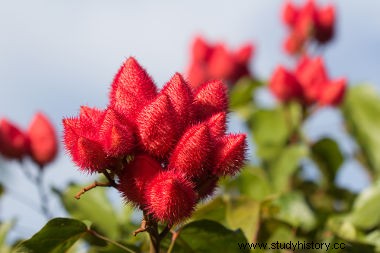
By Me. Cláudio Fernandes
With the Portuguese maritime expansion, which began in the 15th century and expanded in the 16th century, and the successive conquests of islands in the Atlantic and strips of land on the African coast, as well as the Discovery of Brazil, the Lusitanian empire soon became one of the most powerful in early modernity. In addition to dominating the aforementioned territories, the Portuguese also established themselves in the Indies and in part of the Chinese territory, leaving there also colonial structures, such as the one in Macao.
The Portuguese monopoly in the Indies (name given to the current country of India), however, cooled down, due to the wide competition offered by other countries, and this loss of commercial monopoly deprived the Portuguese products such as spices (condiments, aromatic plants for the manufacture of perfumes, etc.). Such deprivation spurred the Portuguese to explore regions of Colonial Brazil hitherto untouched in order to seek new spices. These new spices were nicknamed “drogas do Sertão ”.
The areas that came to be exploited by the Portuguese at the end of the 16th century corresponded to strips of land in the current states of Pará and Amazonas, that is, the “drugs of the Sertão” were extracted from the Forest Amazonian. Although the word “sertão”, whose current use in the 16th century indicated “hidden land”, “inland”, “inhospitable” and “without trees”, does not precisely define an equatorial forest such as the Amazon, it was used to name the origin of the so-called “drugs” extracted from there.
The term “drugs” also had a different meaning than it does today. It was used, above all, to refer to natural products for culinary, medicinal, artisanal and manufacturing use. Among these drugs were annatto (see image at the top of the text), guarana, the Brazil nut, the cotton, the smoke, the sugar and cassava. Items derived from them were also requested, such as rapadura and the brandy.
Access to the interior of the Amazon Rainforest is still complex today; in the sixteenth century, then, it was very difficult. There was, in addition to the danger offered by wild animals, the imminent conflict with indigenous tribes still unknown. In this context, the work of the indigenous themselves was the most appropriate to carry out the extraction.
However, there was an impasse regarding the employment of indigenous labor. On the one hand, the Jesuit priests, who undertook the catechization of the Indians, made use of free indigenous labor. On the other hand, there were the backcountry colonists, also interested in spices and who also made use of indigenous labor, however, enslaving them. This aspect generated a clash between Jesuits and settlers, given that the former were vehemently opposed to the slavery of the natives.
